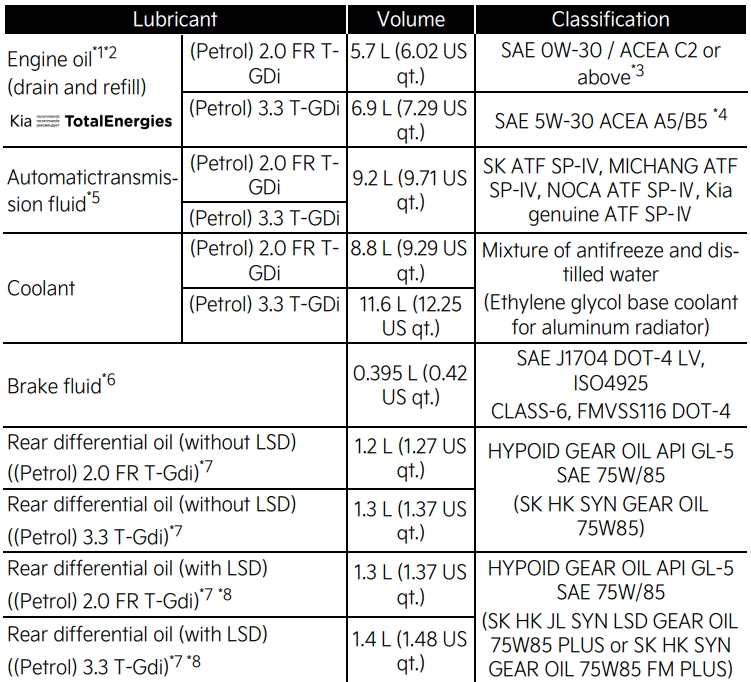The Kia Stinger, a stylish and potent sports sedan, has taken the automotive world by storm, blending performance with luxury. At its heart, driving its rear or all-wheel-drive system, lies its intricate transmission system – a piece of machinery that requires as much care and attention as the powerful engine it complements.
Just as the Stinger is more than an ordinary car, its transmission system is more than a mere assembly of gears. It’s a meticulously crafted component that shifts the vehicle between gears smoothly, ensuring the driver gets the maximum performance and responsiveness the car promises. But to keep this system running flawlessly, regular transmission fluid maintenance becomes paramount.

What is Transmission Fluid?
Transmission fluid is a specially formulated liquid that lubricates, cools, and cleans the moving parts of the transmission. It plays a pivotal role in ensuring the gears shift smoothly, preventing grinding or any unwanted noises.
Its properties also assist in regulating the temperature within the transmission system, preventing it from overheating during intense drives or long journeys.
Why Using the Correct Fluid Type is Crucial?
For a high-performance vehicle like the Kia Stinger, every component’s efficiency counts, and the transmission fluid is no exception. Using the correct type ensures:
- Optimal Lubrication: The right fluid will have the necessary viscosity to reduce friction between moving parts, ensuring smooth gear shifts and minimizing wear.
- Temperature Regulation: Different fluids have varied cooling properties. Using the recommended type ensures that the transmission does not overheat, maintaining the Stinger’s performance.
- Prevention of Contamination: The correct fluid will also have specific detergents and additives that help in keeping the transmission clean, prevent buildup, and ensure longevity.
Simply put, using the correct transmission fluid type is not just about maintaining your car; it’s about preserving the exhilarating driving experience that the Kia Stinger promises. The vehicle’s performance, its longevity, and even its safety can be affected by this seemingly simple choice. It’s a small detail with a significant impact.
2018 2019 2020 2021 2022 2023 Kia Stinger Transmission Fluid Capacity And Transmission Fluid Type
For the initial release of the Kia Stinger, the manufacturer recommends the use of SP-IV automatic transmission fluid (ATF). This type of fluid is specifically designed to maintain the optimal performance and longevity of the transmission system. Before purchasing, always ensure the fluid is compliant with the SP-IV specification.
The transmission fluid capacity for this generation is approximately 9.7 liters (9.2 quarts) when doing a full change, including the torque converter. For a simple drain and fill, you’re looking at approximately 4 liters (4.2 quarts). However, always refer to your vehicle’s manual to confirm the exact amount.

| Gearbox | Fluid Capacity | Fluid type |
|---|---|---|
| 8-speed A8LR1-1 | Total fill: 9.7 quarts (9.2 liters) | SP-IV ATF |
| 8-speed A8TR1-1 | Total fill: 9.7 quarts (9.2 liters) | SP-IV ATF |
Though the facelifted model is structurally similar to its predecessor, there might be minor tweaks. As of the last update, the fluid capacity remains around 7.6 liters for a full change. Nonetheless, for the most accurate and up-to-date information, always check the vehicle’s user manual or consult with the Kia dealership.
The Risks of Using Incorrect Fluid Types
While it might be tempting to opt for a different transmission fluid, either due to availability or cost, doing so can have several repercussions:
- Reduced Performance: Incorrect fluid can hinder the smooth shifting of gears. Over time, this can result in a sluggish driving experience, not matching the Kia Stinger’s true potential.
- Increased Wear and Tear: The right transmission fluid minimizes friction among moving parts. Using an inappropriate fluid can amplify wear, potentially leading to costly repairs or replacements in the long run.
- Overheating Issues: Transmission fluids are also coolants. An incorrect fluid might not cool the system as efficiently as the recommended one, leading to overheating, which can seriously damage the transmission.
- Potential for Contamination: Each transmission fluid type has specific additives. Using the wrong type might lack the necessary additives, leading to increased contamination and buildup inside the transmission.
- Void Warranty: Using an incorrect fluid type may void the warranty of the vehicle’s transmission system. This means that any repairs or replacements needed due to issues caused by the wrong fluid will come out of the owner’s pocket.
In essence, while the Kia Stinger represents the epitome of performance in Kia’s lineup, ensuring its peak performance requires meticulous attention to detail, starting with the right transmission fluid. The stakes are high, and the choice of fluid becomes crucial not just for the car’s performance but also for the owner’s peace of mind.
Steps to Check Transmission Fluid Levels
- Warm Up the Vehicle: Start by warming up your Kia Stinger. Transmission fluid expands slightly when warm, so to get an accurate reading, it’s best to check it at operating temperature. Drive around for about 10-15 minutes.
- Park on a Level Surface: Once the vehicle is warmed up, park it on a flat surface. This ensures that you get a precise measurement when checking the fluid level.
- Shift Through Gears: With the engine running and the vehicle stationary, shift the
transmission through each gear, pausing for a few seconds in each position. Return the gear selector to “Park” or “Neutral”.
- Locate the Transmission Dipstick: Open the hood and locate the transmission fluid dipstick. On most Kia Stingers, it should be distinguishable from the engine oil dipstick and labeled or colored differently.
- Remove and Clean the Dipstick: Pull the dipstick out and wipe it clean with a lint-free cloth or paper towel.
- Check the Fluid Level: Reinsert the dipstick fully, then pull it out again. The fluid should be between the two marks (often denoted as “MIN” and “MAX” or simply two notches). If it’s below the “MIN” mark, you may need to add fluid.
- Inspect Fluid Quality: While checking the level, also observe the fluid’s color and smell. New transmission fluid is typically a clear, pinkish-red hue. If it appears dark brown or black, or if it has a burnt smell, it may be time for a change.
- Reinsert the Dipstick: After inspecting, ensure that the dipstick is securely replaced to prevent any contaminants from entering the transmission system.
- Consult the Manual or Mechanic: If unsure about the fluid condition or if there seems to be a drastic drop in fluid levels in a short span, it’s best to consult the vehicle’s manual or get the advice of a professional mechanic.
Regularly checking the transmission fluid level and quality in your Kia Stinger is a simple yet vital maintenance task. It ensures that your car operates smoothly and gives early warnings of potential transmission issues.
Changing Transmission Fluid for Kia Stinger
Indications on When to Change Transmission Fluid:
- Mileage Recommendation: Many automakers, including Kia, recommend changing the transmission fluid every 60,000 to 100,000 miles. However, always refer to your Kia Stinger’s owner manual for model-specific recommendations.
- Color of the Fluid: Fresh transmission fluid is usually a translucent pinkish-red. When it turns a dark brown or even black, it’s a sign that it needs replacement.
- Burnt Smell: If the transmission fluid smells burnt, it indicates that it’s degraded and should be changed.
- Sluggish Gear Shifting: If you notice that your Kia Stinger is shifting gears slower than usual or if there’s any hesitation, it might be due to old or contaminated transmission fluid.
- Grinding or Unusual Noises: When the car is in neutral, any grinding or unusual noises can indicate an issue with the transmission fluid or the transmission itself.
- Transmission Slippage: If the gears slip or there’s a delay in acceleration, it could be a sign of low or old transmission fluid.
Guided Steps to Replace the Transmission Fluid in a Kia Stinger:
- Preparation:
- Ensure the vehicle is on a level surface.
- Engage the parking brake.
- Wear safety gloves and goggles.
- Warm Up the Vehicle: Drive the vehicle for about 10-15 minutes. Warm fluid drains faster and more completely.
- Lift the Vehicle: Using a hydraulic jack and jack stands, raise the front of the vehicle to access the transmission pan underneath.
- Locate the Transmission Pan: Once under the vehicle, locate the transmission pan – it’s typically a flat, metal pan closer to the engine’s rear.
- Drain the Fluid: Position a catch pan under the transmission pan. Remove the drain plug, allowing the old fluid to flow out. Allow it to drain completely.
- Remove the Transmission Pan: For a thorough change, you can remove the transmission pan to access the filter. Remove all the bolts around the pan, lower it carefully, and replace the old filter with a new one.
- Reattach the Transmission Pan: Clean any gasket residue from the pan and the mating surface on the transmission. Install a new gasket on the pan, then reinstall the pan on the transmission.
- Refill with New Fluid: Using a funnel, pour the new transmission fluid into the transmission fill port (typically located in the engine bay). Ensure you’re using the correct type and quantity of fluid.
- Start the Vehicle: With the transmission in “Park” or “Neutral”, start the engine and let it run for a few minutes. Shift through all the gears and then back to “Park”. Check for any leaks underneath the vehicle.
- Check the Fluid Level: Using the transmission dipstick, check the fluid level and adjust as necessary.
- Dispose of Old Fluid Properly: Take the old fluid to a recycling center or auto parts store that offers disposal services.
Remember, if you’re not confident in changing the transmission fluid yourself, always consult a professional mechanic. Proper fluid replacement is vital for the longevity and smooth operation of your Kia Stinger’s transmission.
















